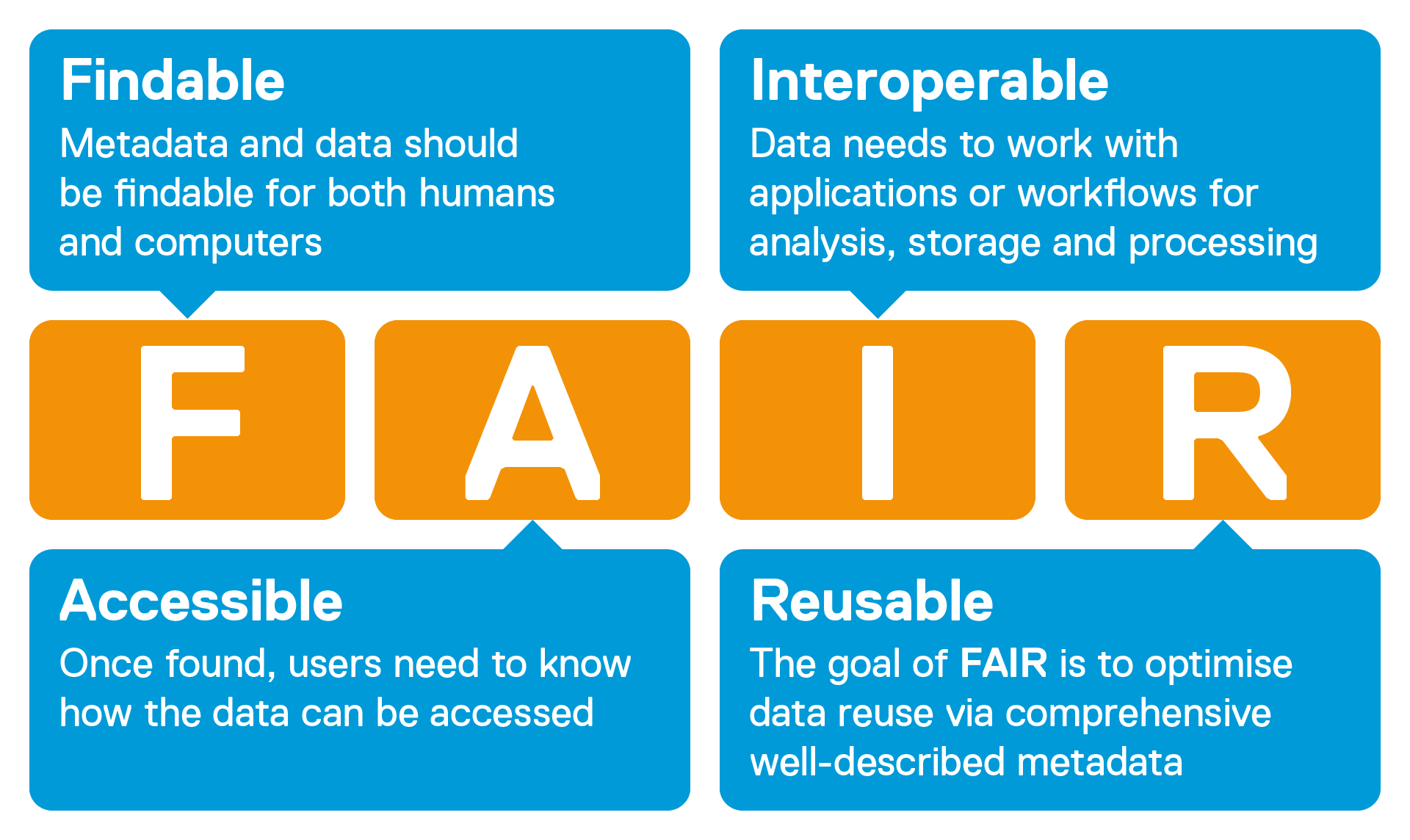Introduction to FAIR Data
Introduction to FAIR Data#
What exactly is FAIR data? How can data be FAIR? What does FAIR mean for your organization and why would it be beneficial to implement FAIR?
The FAIR principles center around improving data management strategies. Traditional data management focusses on the process of improving the tooling around specific data formats, use cases and standards. This however becomes infeasible with the rapid growth of data, both in terms of volume as well as variety.
Instead of focusing purely on the tooling, the FAIR principles suggest a more holistic approach around data management within an organization. These principles provide a guideline for the structure around the data that we use, as well as the services that interact with data.
These principles cover four principal categories:
Findable
Accessible
Interoperable
Reusable

Fig. 1 SciBite, Elsevier.#
These principles have seen rapid adaptation by the scientific community as well as the public sector, with the private sector also showing interest in the value that FAIR can bring. FAIR not only makes your data more manageable, but also makes your data more valuable by increasing the scope of possible application, speeding up data exploration and encouraging reuse of existing data sources.
See also
To already get a glimpse of the possibilities that are enabled by FAIR data, see this article on privacy-preserving data analysis presented by TNO.
Acquiring and storing data can be expensive. More reuse of existing data means a lower operational overhead and a more sustainable data strategy. In this digital handbook we will cover each of the aspects of FAIR and how FAIR can be implemented as a business data strategy. In addition we will discuss the importance of FAIR data and services, the core principles, use cases, as well as related technologies.
